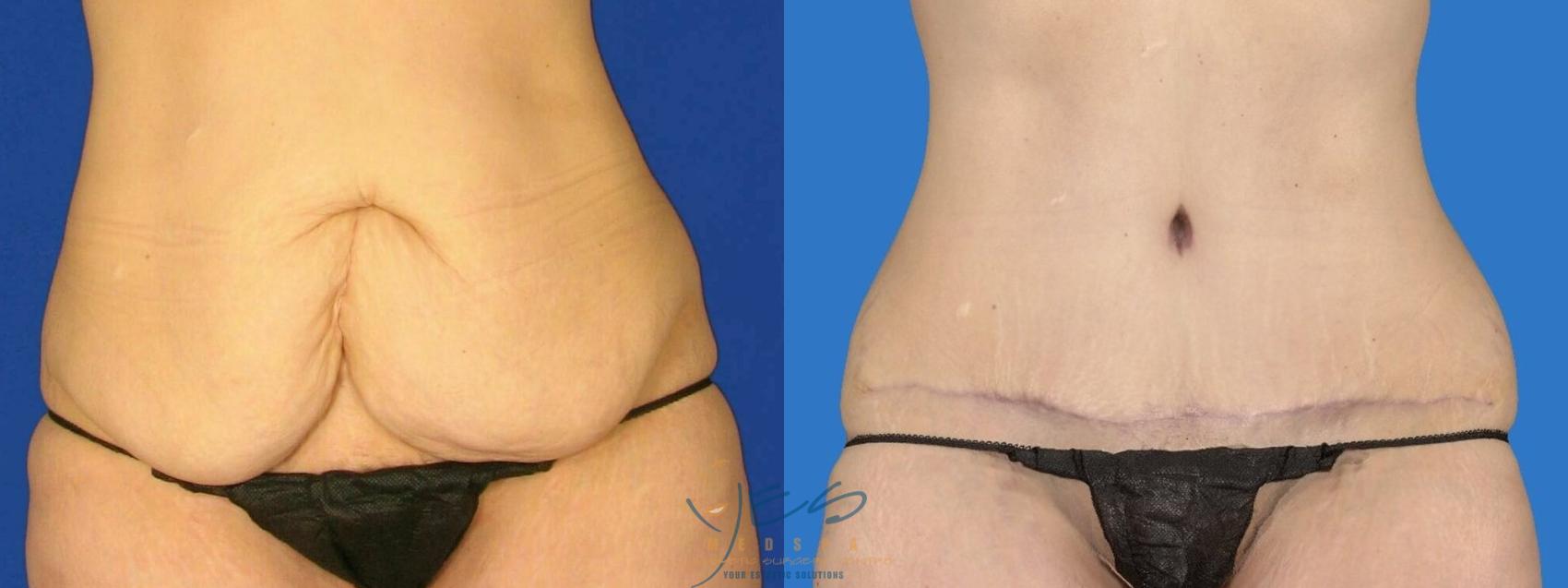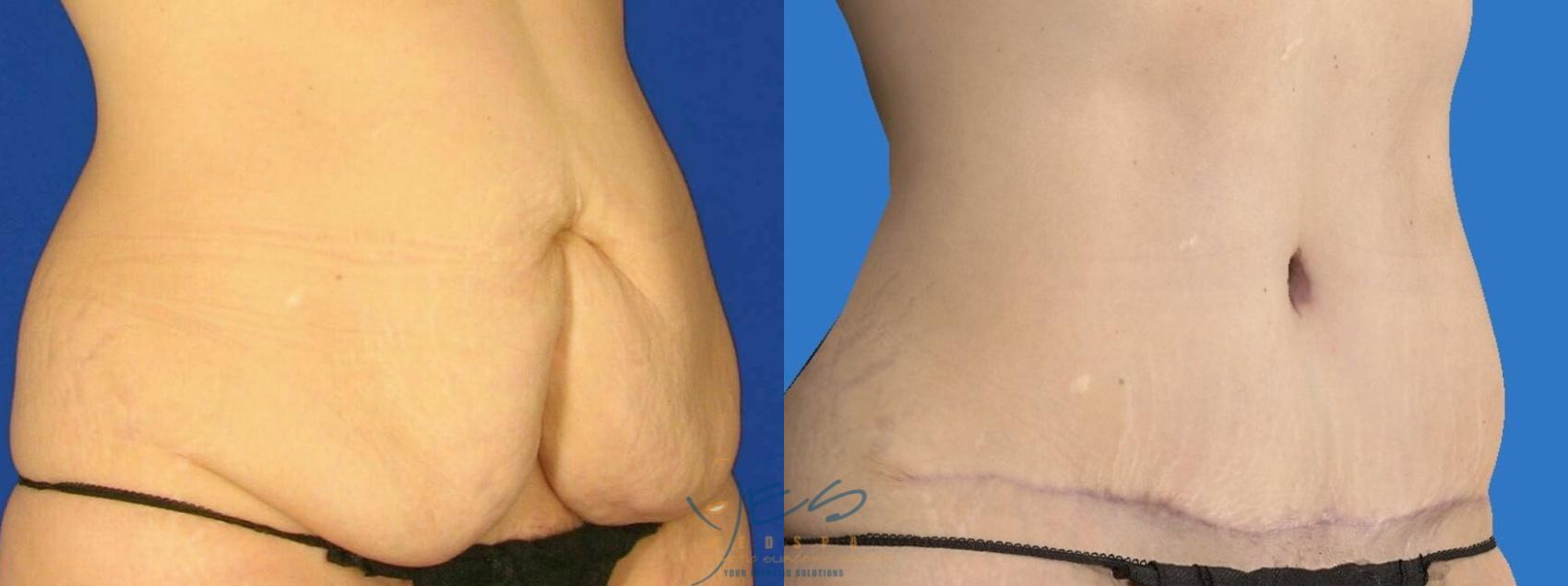Successful tummy tuck procedures produce truly transformative results. If you’re in the process of looking for a plastic surgeon to perform a tummy tuck, before-and-after photos are a good way to narrow your choices (along with patient reviews posted on independent websites.)
At first glance, it’s easy to be amazed by the results shown in virtually all before and after photos featuring tummy tuck patients. Knowing what to look for besides flatter stomachs and the lack of excess skin can help you compare surgeons’ technical skills.
3 Keys to Identifying Excellent Tummy Tuck Results
There are 3 details to look for when viewing tummy tuck before and after photos. These include the location of the scar, the belly button’s appearance, and the contour of the abdomen.
A Low Scar
If you’re getting a full tummy tuck, the procedure involves making a horizontal incision that extends from one hip to the other. Tummy tuck patients willingly accept having a lengthy scar in exchange for the confidence that comes with a flatter stomach. But a skilled plastic surgeon can make the scar inconspicuous by making the incision as low as possible—just above the pubic area.
You should be able to easily conceal the scar even when wearing a low-cut bikini bottom. Another essential element to look for in a scar is that it’s straight. Zig-zag incisions reflect poorly on a surgeon’s skill.
A Natural-Looking Belly Button
When prospective patients review tummy tuck before-and-after photos, belly buttons are often overlooked because they look natural. But that natural look only happens when a plastic surgeon pays attention to detail and is technically skilled. It might surprise you that the belly button’s appearance can be the key to patient satisfaction after a full tummy tuck.
In most abdominoplasty procedures, the umbilical stalk—the tissue that creates your belly button—remains intact. One end attaches to your abdominal muscles, and the other is what you see. After removing the loose skin from the abdomen, the surgeon pulls down the upper abdominal skin and makes a new hole where the belly button comes through. (Another less-common technique involves detaching the umbilical stalk, relocating it, and then re-attaching it to the muscle.)
Because the proportions of the patient’s stomach change when the skin is pulled tight, the surgeon needs to create a new opening for the umbilical stalk and sculpt a new belly button. When it comes to the aesthetics of belly buttons, the unnatural navels you might see after a tummy tuck are a skinny “coin slot” slit or a large, rounded umbilicus.
A skilled surgeon creates a belly button that isn’t too narrow or round and still has some depth. In other words, it looks like the natural belly button a patient was born with.
Abdominal Contours That Look Natural
When looking at before-and-after photos, it’s the flat stomachs that catch most people’s attention. Look closer, though, and you’ll likely see contours and curves sculpted by the plastic surgeon to create results that look more natural. This is usually accomplished by combining liposuction with the tummy tuck. A surgeon uses liposuction not only to remove fat, but also to accentuate the tummy tuck results by shaping the flanks and the area above the belly button. Depending on the patient, liposuction may also be used on the lower back.
Request a Consultation
If you want to speak with one of our experienced plastic surgeons to learn more about tummy tuck surgery, call our Langley office, located in the geographic centre of metro Vancouver, at (604) 888-9378 or request a consultation using our online form.










Leave a Reply